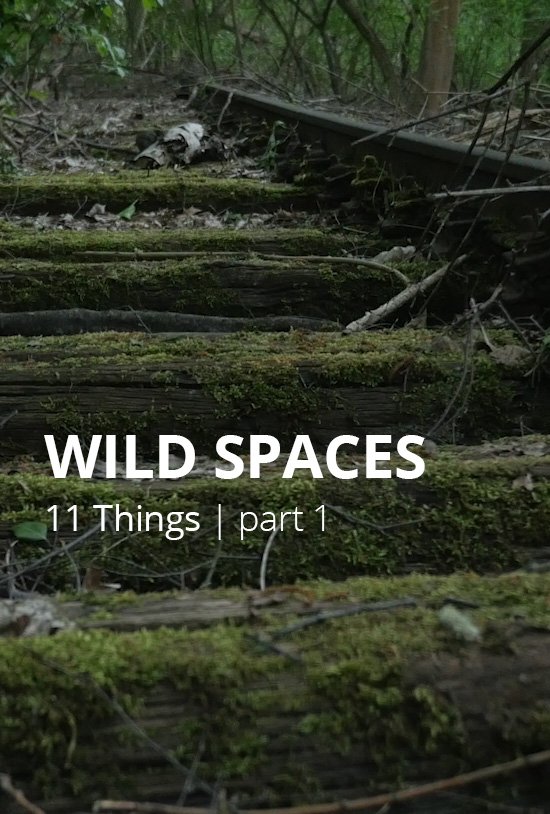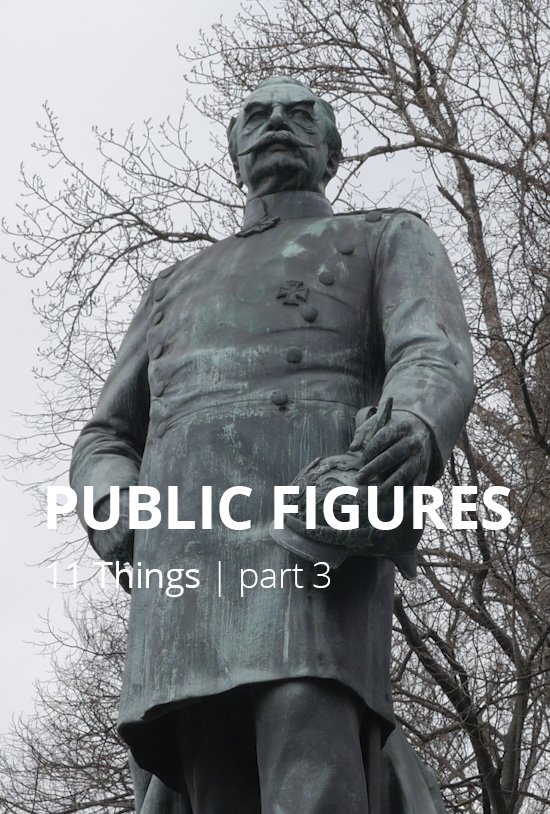Wildlife
11 THINGS I LEARNED SPENDING A YEAR IN BERLIN’S PARKS | part 2
I still hadn’t seen a beaver or wild boar in Berlin. Then I was biking one evening and was almost run over by two families of boars!
Two sets of parents with young boars ran down the sidewalk I was biking up. They weren’t running at me but running from one open green space to another. Seeing these families run in fear was more upsetting to me than being forced to jump into the bushes to avoid them. It reminded me of stories of homeowners in California who found bears eating from their garbage cans because of the draught, which meant the forests were not producing enough food.
It is becoming more common that cities around the world are home to unexpected animal life. Fewer predators and easy access to food make it relatively easy for many species to coexist in our cities.
Within the city limits of Berlin, there are many mammals including wild boar, beaver, rabbits, fox. Berlin is making space for animals and in the process, our relationship with animals is changing both us and them.
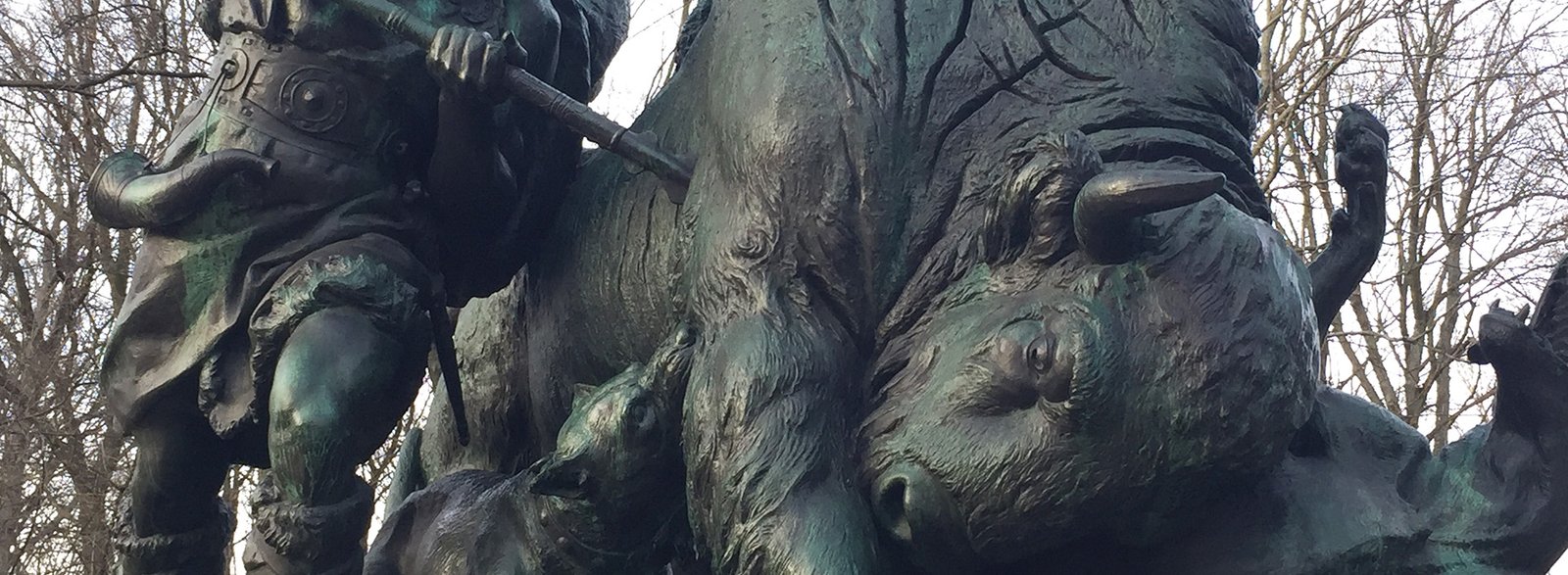
Berlin’s Hunting History
At one time Bison roamed this area. Tiergarten is the largest park in the center of Berlin. The name Tiergarten means ‘animal’ or ‘female deer’ and ‘garden’, refers to its history as a royal hunting ground.
I discovered this when only after learning there were statues memorializing hunter in the heart of the park. I wondered why this was so and started to do the research.
From about 1527 this area was designated as a royal hunting ground. Although only royalty could hunt anywhere, including on private land. By the mid-1600s the royalty let the general public hunt there, which was rather progressive given the norms of the day. A hundred years later, in 1740, the land became a garden. Both the economic and political structures were starting to shift. It took another hundred years, protest and the 1848 revolution attempt before hunting privileges were removed. Still, hunting rights were limited to owners of land greater than 300 acres.
Today, at the south end of Grosser Tiergarten you can find four statues memorializing hunting of the past. The statues were created during a statue renaissance. Actually, most of the statues you see in Tiergarten today were created in the 30 years between 1878 and 1909. These include the Siegessaule (the column and victory angel), poets, writers, king and queen, warriors, empire builders and more.
The hunted animals include a hare, fox, wild boar and a bison (or buffalo). Like its American cousin, the European bison were hunted into extinction in the wild in the early 1900s, the last one died in the wild in 1927. The species survived because of zoos.

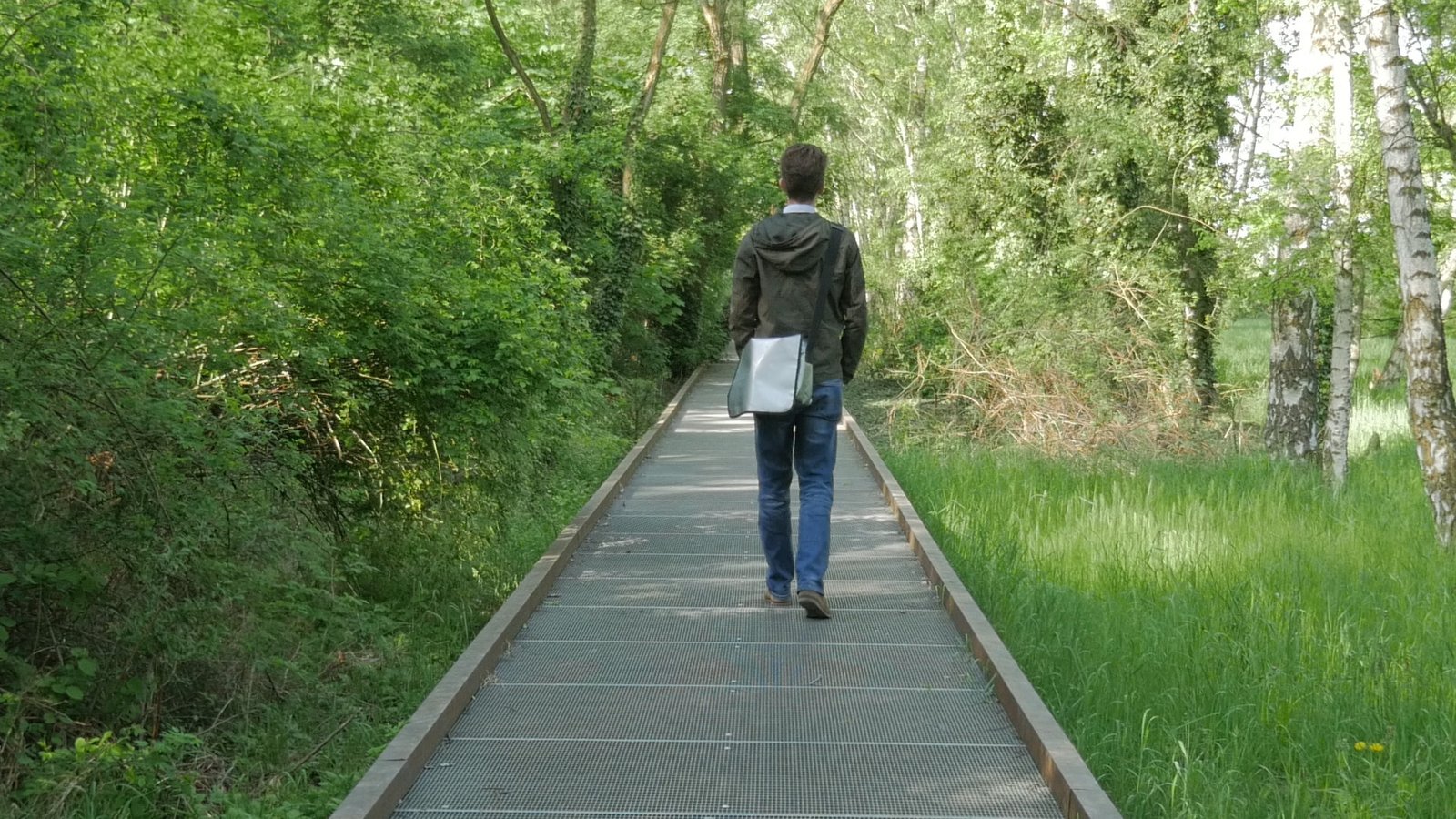
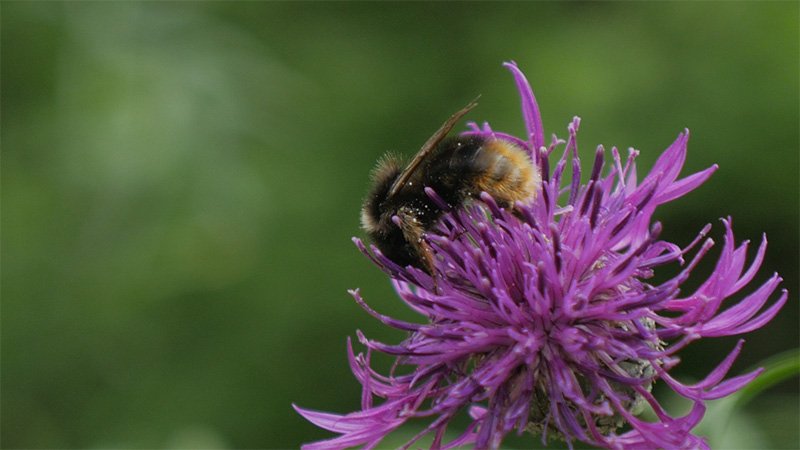
A Bug’s Life
I find it interesting that one of the unexpected consequences of the wall included creating pockets of unoccupied land where nature could take over and wildlife could flourish.
Natur-Park Schöneberger Südgelände was one of these spaces. As visitors walk north into the reserve they walk on elevated metal walkways that allow the free movement of animals and insects below. Within this plot of land just 20-minutes by train from Tiergarten in the center of Berlin, one can find 49 species of birds, 14 species of grasshoppers and crickets, 57 spider species and 95 bee species. Over 60 of these species are endangered.
Many city dwellers, myself included, think of bugs as a nuisance, especially those little fruit flies that have invaded my kitchen. However, a study by a group of hobby entomologists who had been catching insects for 27 years, assisted by several renowned researchers, found a decline in insect biomass of 75% throughout 60 nature protection areas in Germany. We are not only losing mammals, birds, and fish in large quantities, we are also losing insects.
Developers had wanted to purchase this land but residents joined together to save the Schöneberger Südgelände area from being developed.
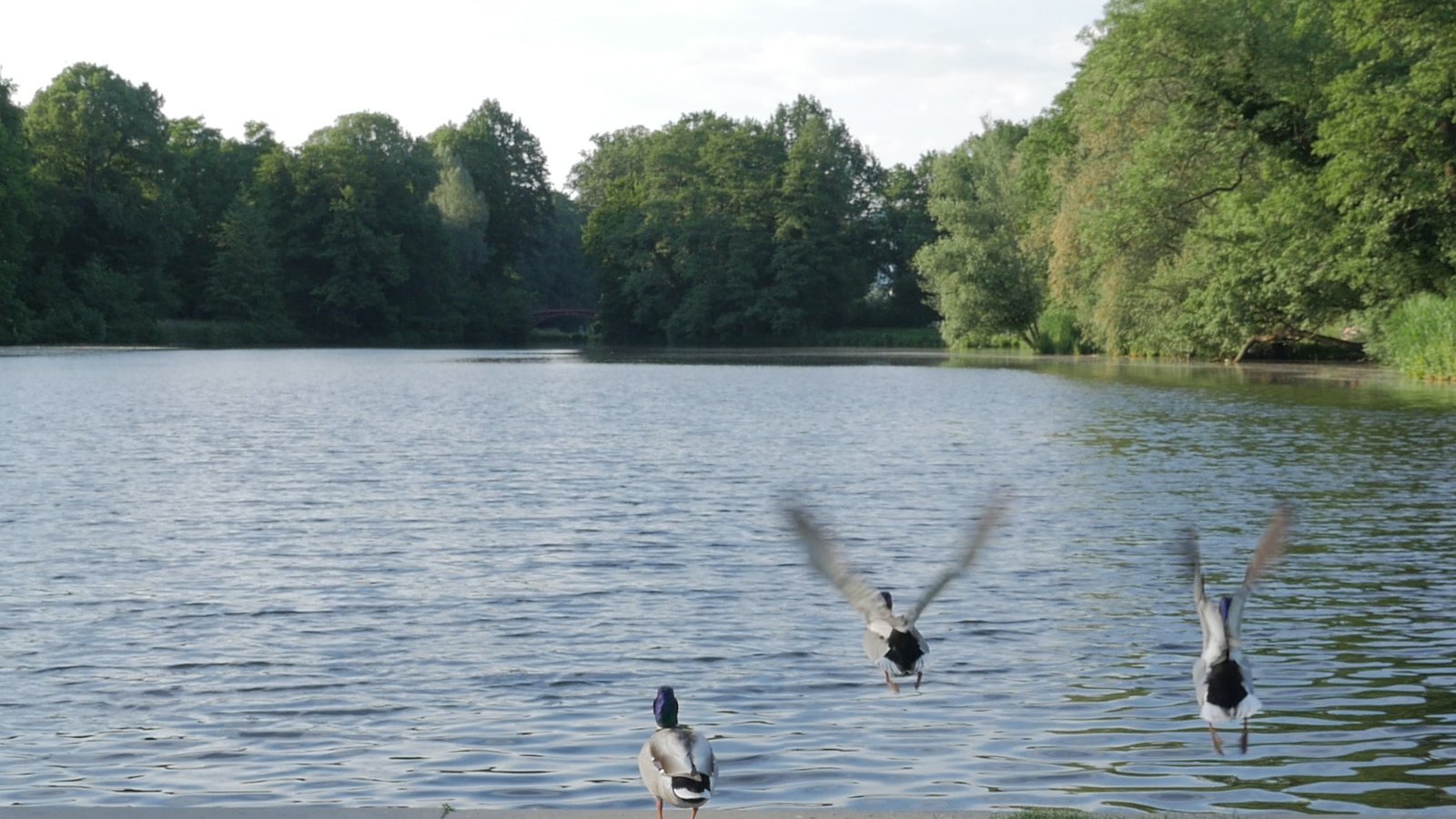
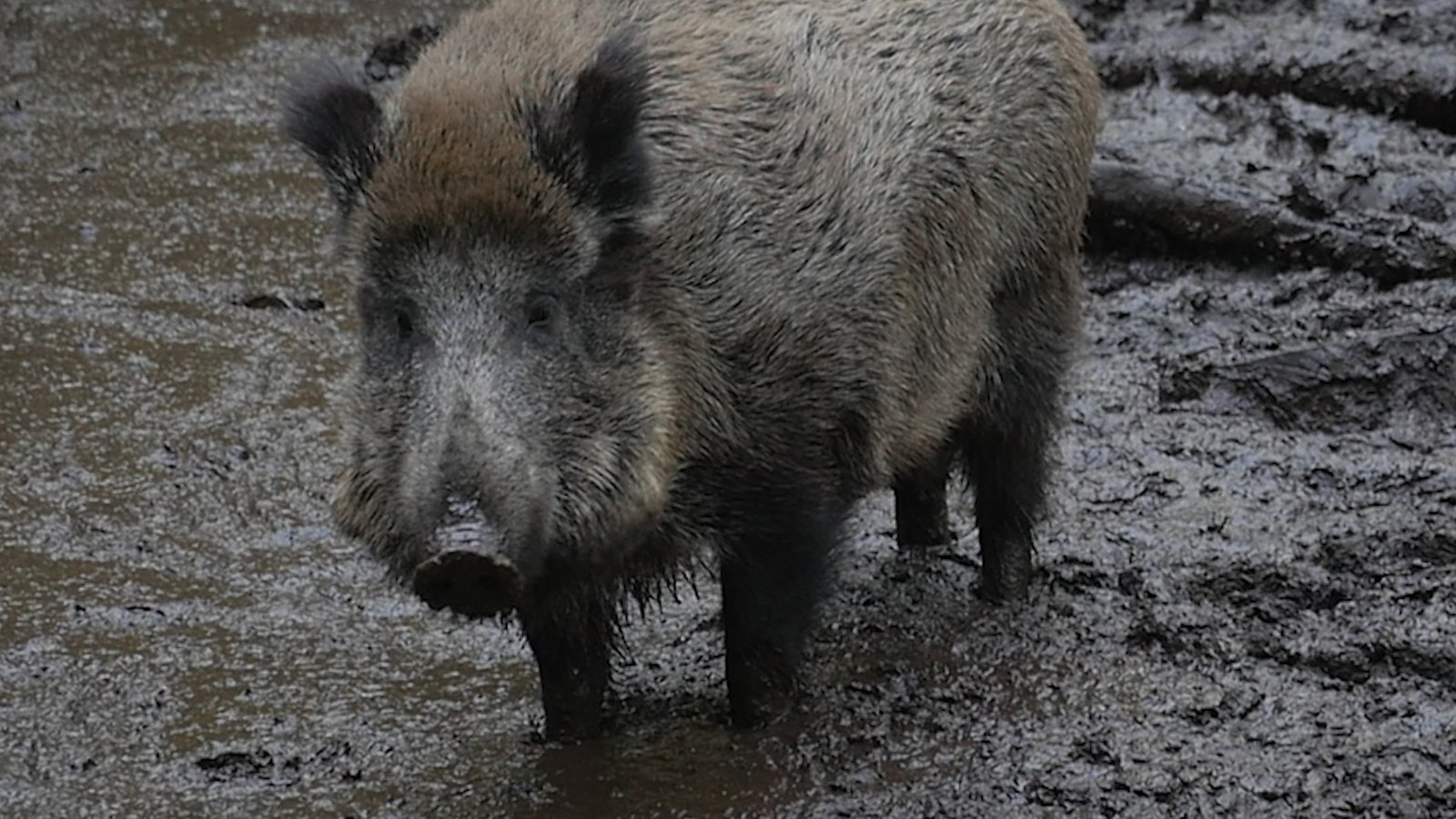
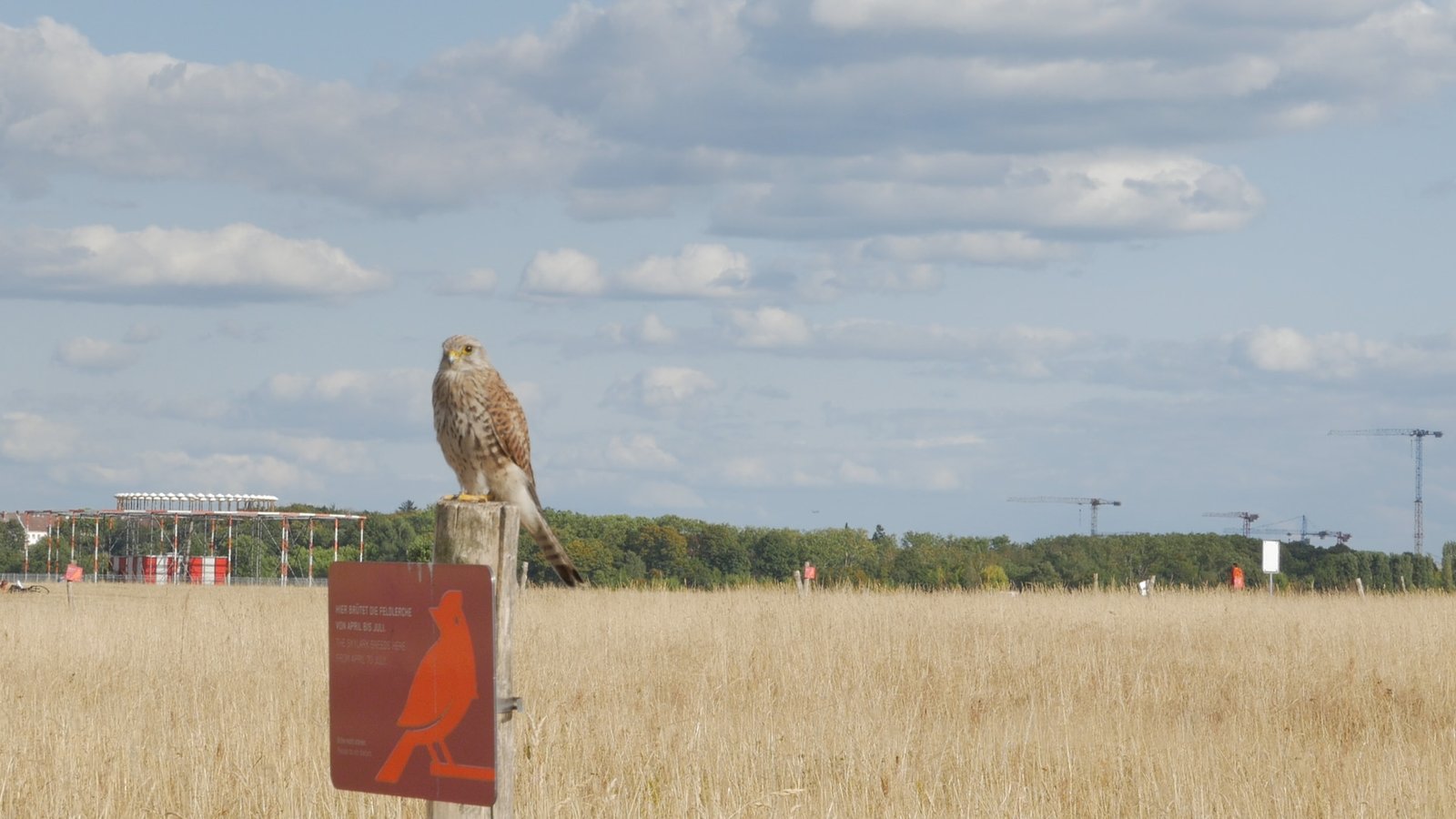
Making Space
Berlin has made space for many species native and non-native. A few species that are being actively preserved include bats, peregrine falcons, praying mantis, bees, and beavers.
Just this past weekend I was biking along the Panke River and saw a new installation of beehives outside of Bürgerpark, a popular park in the district of Pankow.
Bats inhabit the Spandauer Citadel where they hang out for the winter, about 10,000 of them. I’ve also seen them flying at night in summer.
In lakes throughout Berlin, you’ll find Mandarin ducks, the most colorful duck in Berlin. This species was brought to Europe in the 1800s for zoos and private collections. Apparently, many escaped not just in Berlin but also in the Netherlands.
And turtles keep appearing in Tiergarten’s lake. According to Nicolas Bogislav von Lettow-Vorbeck, author of Stadtwild (City Wild), while these turtles resemble Germany’s native turtle they are actually from Florida. Most were at one time pets and were let out into the ‘wild,’ maybe because they can live up to 90 years.
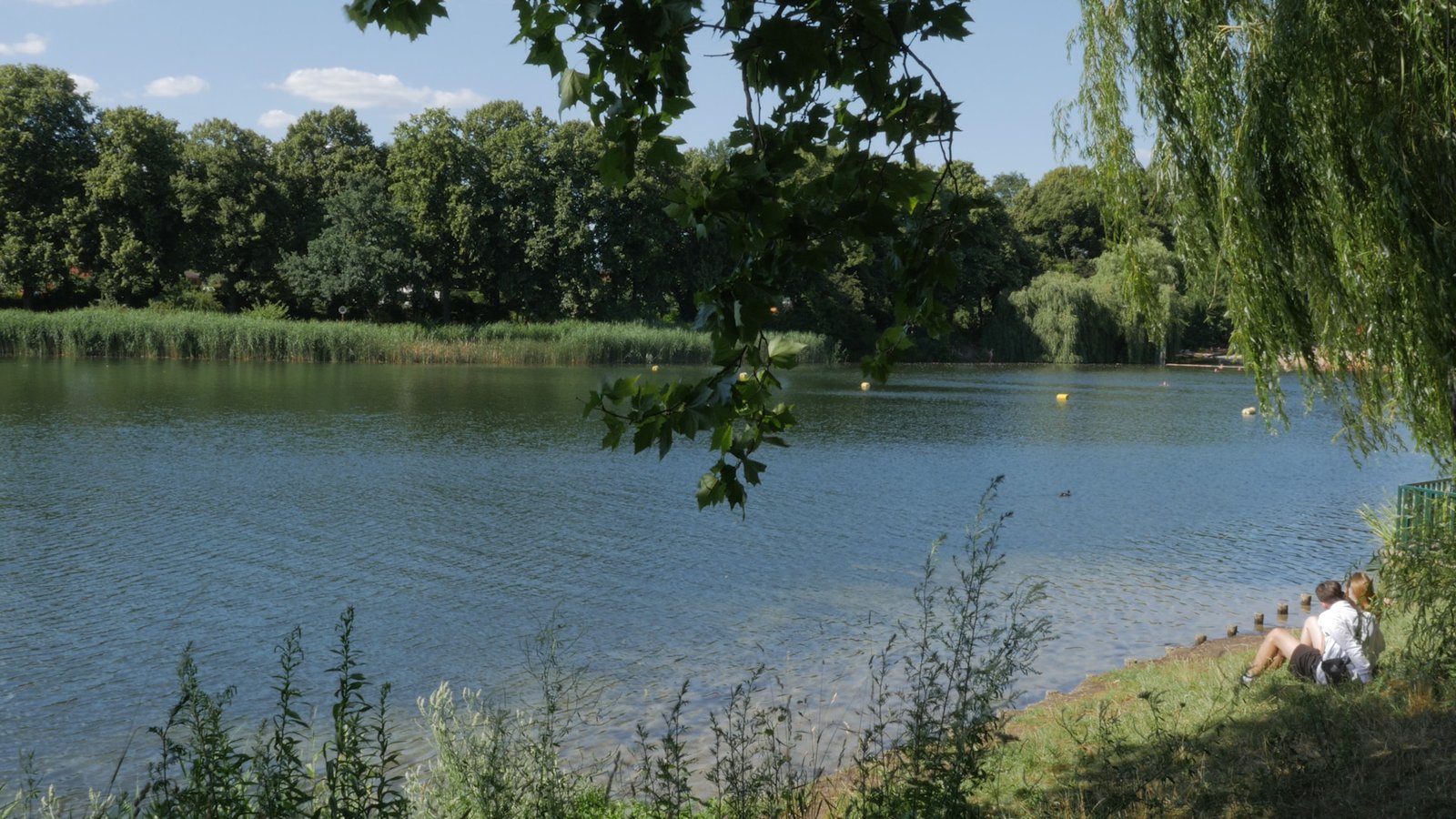
The role that wildlife plays in a city can be beneficial on many levels, not just for preserving the species. Animal sightings bring pleasure and ground us in our own human nature. As Nicolas reflected, “We as humans, through evolution and even in our DNA, we have that deep connection with animals. And when we see and when we understand animals, we also can understand ourselves better.”

